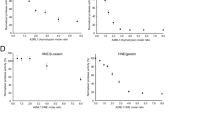Abstract.
Protein C inhibitor (PCI) is a widely distributed, multifunctional member of the serpin family of protease inhibitors, and has been implicated in several physiological processes and disease states. Its inhibitory activity and specificity are regulated by binding to cofactors such as heparin, thrombomodulin and phospholipids, and it also appears to have non-inhibitory functions related to hormone and lipid binding. Just how the highly conserved serpin architecture can support the multiple diverse functions of PCI is a riddle best addressed by protein crystallography. Over the last few years we have solved the structure of PCI in its native, cleaved and protein-complexed states. They reveal a conserved serpin fold and general mechanism of protease inhibition, but with some unique features relating to inhibitory specificity/promiscuity, cofactor binding and hydrophobic ligand transport.
Similar content being viewed by others
Author information
Authors and Affiliations
Corresponding author
Additional information
Received 1 July 2008; received after revision 16 August 2008; accepted 22 August 2008
Rights and permissions
About this article
Cite this article
Huntington, J.A., Li, W. Structural insights into the multiple functions of protein C inhibitor. Cell. Mol. Life Sci. 66, 113 (2009). https://doi.org/10.1007/s00018-008-8371-0
Published:
DOI: https://doi.org/10.1007/s00018-008-8371-0




